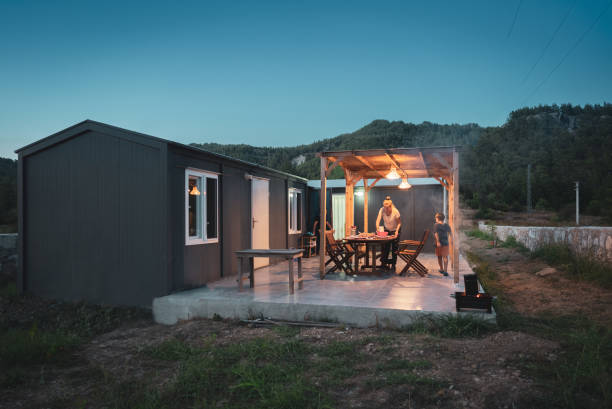In matters involving local planning authorities, it is far better to ask for permission than forgiveness, and this is currently more so the case with shipping container conversions.
Whilst the use of shipping containers for almost any residential, business or industrial use you can think of has erupted in popularity over the past few years as they have proven to be a cheap and attractive option, there have been complications when it comes to planning permission.
There was the Newport Council ruling on the shipping container farmhouse constructed by Stephen Gibbons that had existed for three decades and yet received enforcement action, and whilst this was a very strange case, it also highlighted the difficulties of getting retrospective approval for a container project.
However, the case of a street food restaurant in Cornwall may have shown that this attitude might be changing.
The Cargo Conundrum
Based in the town of Porthleven in Cornwall, Cargo, formerly known as StrEATkitchen and Big Eats, is a shipping container street food restaurant with a distinct industrial design aesthetic and a rather beautiful view of the English Channel, as well as a complex planning history.
Set up in a previously empty site between a local bakery and a local chip shop, Big Eats was set up by Jason Bardell initially as a covered market, receiving planning permission in 2020 under Use Class A1 (what would now be classified under Use Class E(a)).
One of the businesses on the site was Big Eats Street Kitchen, a 30-foot container which remained at the same location even as the rest of the covered market was removed, which required a change of use application to be sought retroactively from A1 to A5 (now sui generis or “one of a kind”)
Around this time, Mr Bardell sold the business to Clare and Marlon Bush, although the planning application continued under his name retroactively seeking approval for the site’s use.
There were concerns and objections raised by Historic Environment Planning as well as Porthleven Town Council, arguing that since the container is located within an architecture conservation area in Cornwall, the use of a temporary structure was argued to be inappropriate.
Its uniqueness, according to both authorities, was seen as to the detriment of the listed buildings nearby that were at least a century old.
However, Cornwall Council, the local planning authority for the area, overruled these concerns and approved the shipping container restaurant remaining, albeit with some conditions.
The biggest of these is that as soon as the container stops being used as a restaurant, it needs to be removed alongside the storage, outside seating and any additional equipment housed on the site, and the land brought back to its original condition.
This is in keeping with the spirit of container architecture and its modular, moveable nature. It is technically temporary and the application makes that clear but as long as it is still being used it can remain.
This provides a lot of hope for planning applications for similar retail buildings. As long as there is a clear plan and a mindfulness of the surrounding area, container designs can work almost anywhere.

